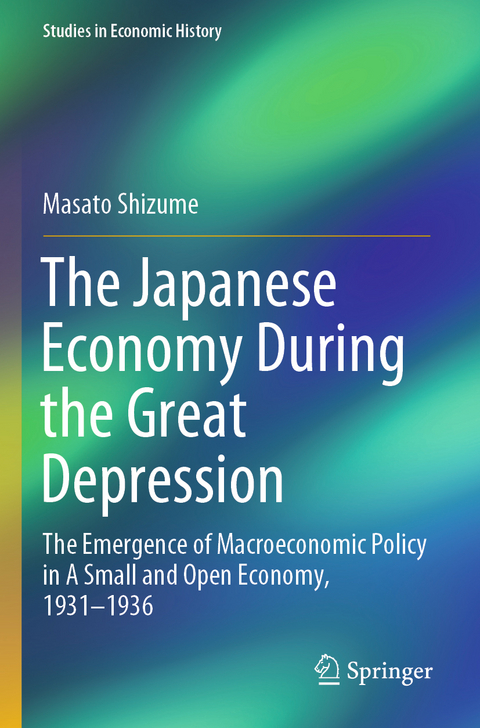
The Japanese Economy During the Great Depression
Springer Verlag, Singapore
978-981-13-7359-6 (ISBN)
This work shows how Japan escaped from the depression in its early stage. It illustrates a transmission mechanism of the macroeconomic stimulus package of currency depreciation, easy money, and fiscal expansion. As well, it argues that the key for economic recovery was currency depreciation and that expectations played a pivotal role in ending deflation and kick-starting economic recovery. Also contained here is an exploration of politico-economic interaction in the shaping of economic policy and the long-term consequences of policy actions such as departure from the gold standard and initiation of the government debt finance by the central bank. It is shown that the collapse of the international gold standard and the lack of governance of military spending resulted in a loss of fiscal discipline in the long run.
Masato Shizume is a professor of economics at Waseda University. His research focuses on the history of money and credit and the emergence and developments of the modern society and state in Japan. He has published articles, books, and book chapters on the monetary history of Japan both in English and Japanese. His recent publications include The Emergence and Developments of Credit Money: Evidence from the Pre-modern Period to the Present, 2020 (editor, in Japanese); "Strategic Central Bank Communication: Discourse Analysis of the Bank of Japan's Monthly Report,” Journal of Economic Dynamics and Control, vol. 100, 2019 (with Kohei Kawamura, Yōhei Kobashi, and Kōzō Ueda); "Historical Evolution of Monetary Policy (Goals and Instruments) in Japan: From the Central Bank of an Emerging Economy to the Central Bank of a Mature Economy," Stefano Battilossi, Youssef Cassis, and Kazuhiko Yago, editors, Handbook of the History of Money and Currency, 2018; "A History of the Bank of Japan, 1882–2016," Tor Jacobson, Daniel Waldenström, and Rodney Edvinsson, editors, Sveriges Riksbank 350 Years: A Central Bank in a World of Central Banks, 2018; "Financial Crises and the Central Bank: Lessons from Japan during the 1920s," Isao Suto and Hugh Rockoff, editors, Coping with Financial Panics: Some Lessons from Financial History, 2018. His undergraduate degree is from Keio University and his Ph.D. is from Kobe University.
Introduction: Takahashi Korekiyo, the Man Who Brought Japan Out of the Great Depression.- Japan’s Plunge into and Emergence from the Great Depression.- Policy Innovation in the Great Depression.- Sustainability of Public Debt under Stress.- Origins of the Economic Ideas of Takahashi Korekiyo.- Conclusion: Lessons for Today from Takahashi Korekiyo’s Policies.
| Erscheinungsdatum | 28.09.2022 |
|---|---|
| Reihe/Serie | Studies in Economic History |
| Zusatzinfo | 32 Illustrations, color; 3 Illustrations, black and white; XXI, 111 p. 35 illus., 32 illus. in color. |
| Verlagsort | Singapore |
| Sprache | englisch |
| Maße | 155 x 235 mm |
| Themenwelt | Geschichte ► Teilgebiete der Geschichte ► Wirtschaftsgeschichte |
| Wirtschaft ► Allgemeines / Lexika | |
| Wirtschaft ► Betriebswirtschaft / Management ► Finanzierung | |
| Wirtschaft ► Volkswirtschaftslehre ► Finanzwissenschaft | |
| ISBN-10 | 981-13-7359-0 / 9811373590 |
| ISBN-13 | 978-981-13-7359-6 / 9789811373596 |
| Zustand | Neuware |
| Informationen gemäß Produktsicherheitsverordnung (GPSR) | |
| Haben Sie eine Frage zum Produkt? |
aus dem Bereich


